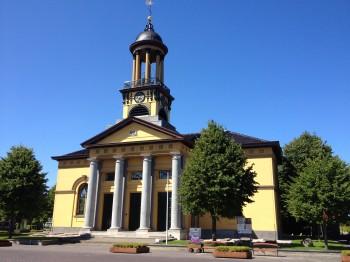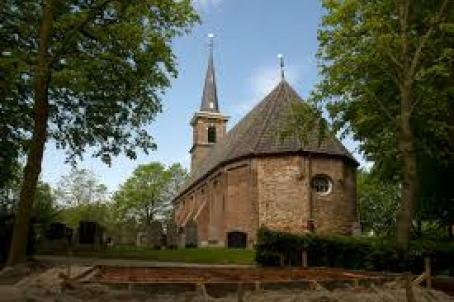De Groate Church

The Groate Church, built in 1844, replaced a brick church that was originally built around 1530. Only the church tower from 1669 was maintained. In 1979 the Alde Fryske Tsjerken Foundation took over the church. The building has undergone radical restoration and has been in use since 1980 as a cultural center. A pilgrim information center has been established in the porch since 2011.
About this building
Sint Jacobiparochie was founded in 1505, when Het Bildt was reclaimed by workers from, for example, Zuid-Holland, Zeeland and Friesland. It is the starting point of the Jabikspad (St James’ Way) that ends in Santiago de Compostela (Spain). The previous church was demolished in 1842 and was 170 years old. The current church is the design of the architect Thomas Romein in a corrupted Empire style. The church has an open entrance hall with four Doric columns, on top of which are an architrave and a pediment. On a square substructure is a lantern with eight columns. During the restoration in 2010/2011, the church was repainted the original yellow colour, which architect Romein had chosen in 1843. In the lantern is a clock from 1952 with a poem from the Bildt language critic H.S. Buwalda: “Deur St. Jabuurster gemeenskapssin Is 't, dat ik hier kommen bin; Soa't eerst myn foorganger deed Sel ik tena loie bij freugd en bij leed.” During the restoration of 1980, the Van Dam organ was maintained. It was last restored in 1983, under the guidance of Jan Jongepier. The Groate Church has been operating successfully for thirty years as a cultural center for the entire municipality of Bildt and the surrounding area. The management is in the hands of Stichting Kultureel Sintrum De Groate Kerk. Behind the church an annex was created in 2003/2004, the Jabikshuus, in which meetings and receptions take place.



